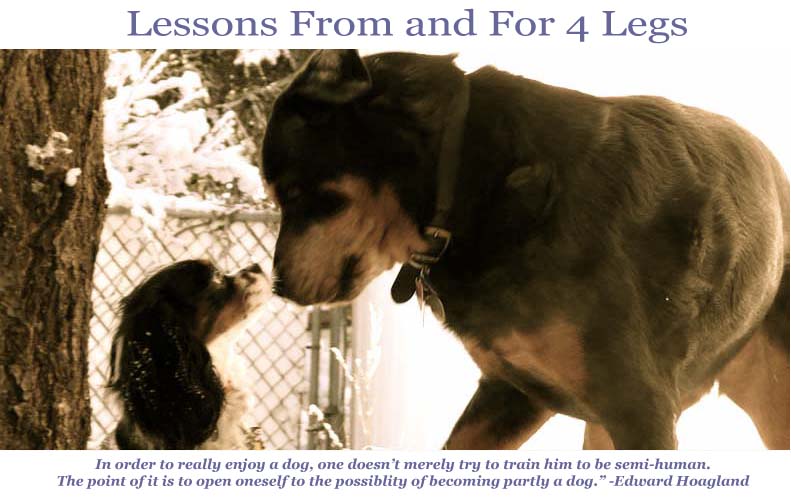- Capturing
- Marking and rewarding a behavior when it is offered by the dog with no cue given by the handler.
- "In the game"
- A phrase used to describe the dogs attitude toward working the skills being taught in that session. In my case I also use it for the handler attitude since imo it is just as necessary for me to be in the game as for my dog. Being in the game would be described as being focused, eager to work, not lethargic about offering behaviors. To me it indicates willingness and excitement on both our parts for what ever task we have at hand.
- Lumping
- Lumping is a term in clicker training that refers too asking for a finished behavior before your dog knows how to do that behavior.
- Luring
- "A hands-off method of guiding the dog through a behavior. For example, a food lure can be used to guide a dog from a sit into a down. This is a common method of getting more complex behaviors. Lures are usually food, but they may also be target sticks or anything else the dog will follow. Trainers must take care to fade the lure early." (http://www.clickertraining.com/glossary)
Dog Reactivity
A reactive dog is one who reacts strongly, in human terms we may call it overreacts, to certain stimuli in the environment. Reactivity is a manifestation of stress. (What is Dog Reactivity)
- Shaping
- "The word "shaping" is scientific slang for building a particular behavior by using a series of small steps to achieve it. Shaping allows you to create behavior from scratch without physical control or corrections, but rather by drawing on your animal's natural ability to learn." (http://www.clickertraining.com/node/1223)
- Splitting
- Split a complete behavior into many smaller behaviors reinforcing each one as a step toward the completed final behavior.
Threshold
The point where one mentally or physically is vulnerable to provocation. (Wictionary)
Refers to the point where the dog can no longer maintain control and crosses the line to reactivity.
- Training Session
- "Either a pre-set period of time or pre-set number of repetitions. Criteria should remain constant during a single session. At the end of a training session, the trainer evaluates the animal’s progress and decides whether to make the next session harder or stay at the same criteria." (http://www.clickertraining.com/glossary)

